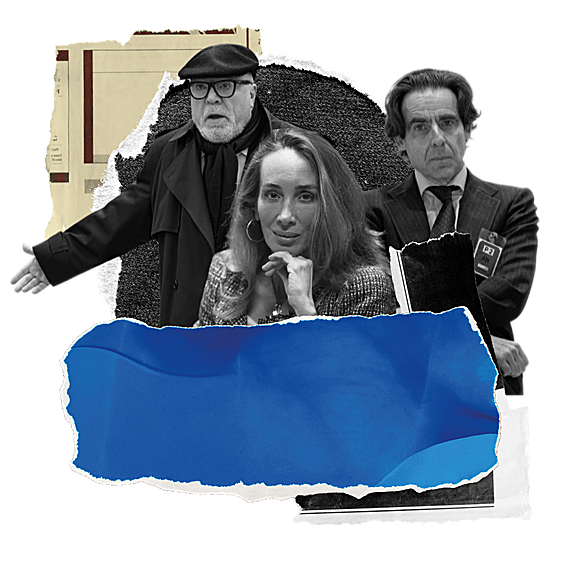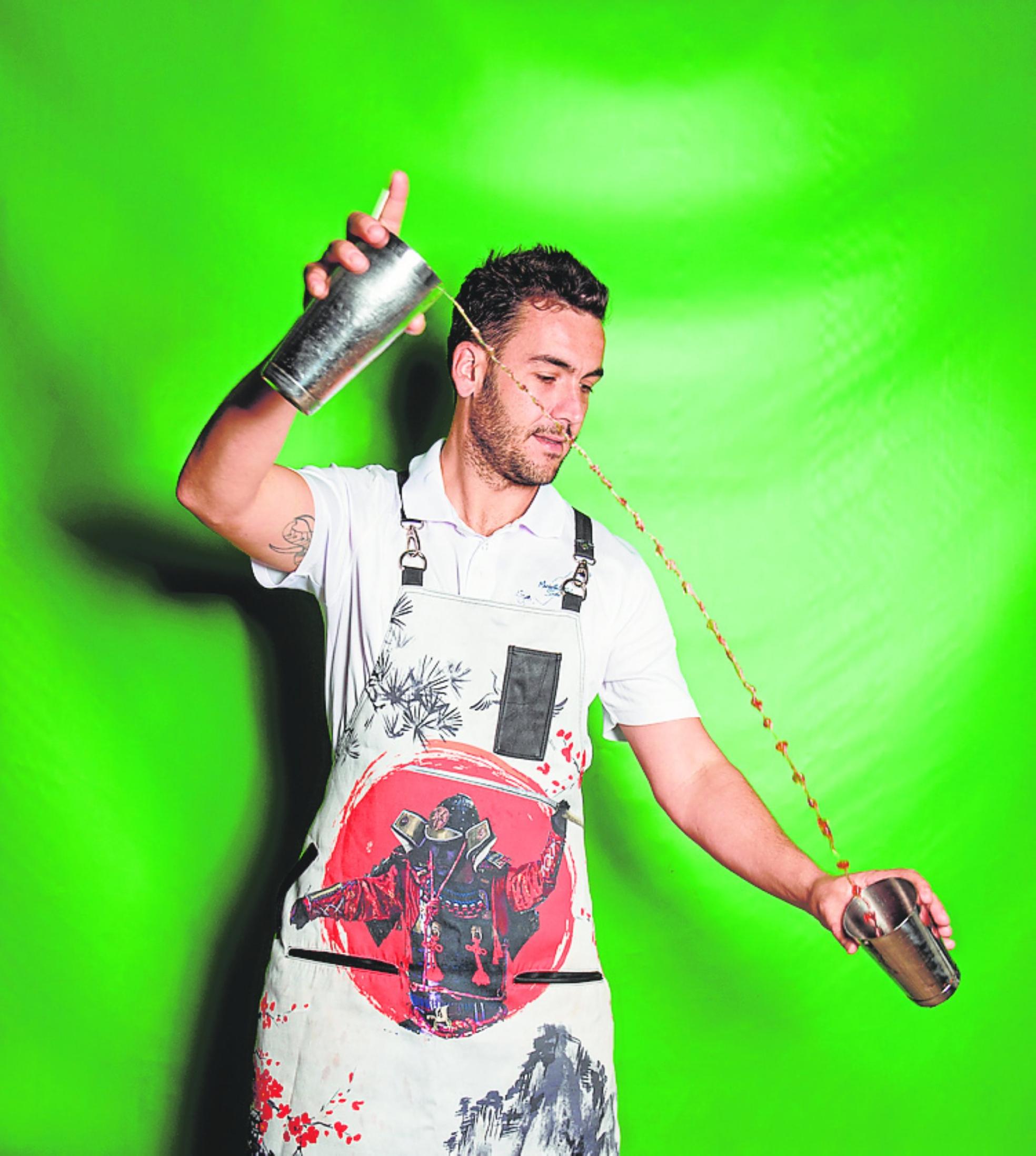Juanjo Montes, cocktails with flair
The pioneer of flair bartending in Spain talks to us about acrobatic cocktail-making and the sacrifices he has had to make to be among the world's elite
ESPERANZA PELÁEZ
Friday, 27 January 2023, 10:17
The first time Juanjo Montes saw the word 'flair' it was on a CV that an agency prepared for him when he was hoping to find work in London. At 20 years old, this young man from Castil de Campos, a village in Cordoba with fewer than 1,000 inhabitants, was following his dream to live in the British capital.
"I suppose the agency thought that if they said I knew about flair it would open doors for me," he says now. It obviously worked, or perhaps luck was just with him because today, at the age of 32, Juanjo Montes is one of the best acrobatic bartenders in the world, a pioneer in flair bartending in Spain and the founder and CEO of the first specialist agency in Andalucía, Marbella Cocktail Studio.
Despite his longing to see the world, his arrival in London had its ups and downs and there were some hard times. "I found it hard to adapt to the country and the language, but I started working in a good restaurant in Chelsea, and that is where I saw the owner doing some flair movements. I was fascinated. He taught me some things and I started practising at the same time as I was training in mixology. Three months after starting I took part in a competition in the Mecca for flair cocktail-making, The Roadhouse in Covent Garden, and I came third. That gave me the impetus to carry on working hard," he says.
Cocktail-making is already a complex speciality. It demands an extensive knowledge of liqueurs, spirits, botanicals, combinations and decoration. Flair also requires good reflexes, agility, coordination and many, many hours of practice. "To be a good flair bartender, we train for six to eight hours a day. My hands tell you a lot about how demanding this work is. Not one finger is like any of the others," he says, smiling as he extends a hand for us to see. It's true: catching thousands of bottles that have been thrown into the air has left its scars.
There aren't many people in the world with the ability to teach acrobatic cocktail-making, because few professionals specialise in it. In fact, Juanjo Montes even attracted the attention of a British TV producer, who followed his routine for a while for an episode of a documentary series about people with rare skills. "Flair is the art of entertaining the customer while you make their cocktail. You can find it all over the world, but not many people do it. There are just a few specialists," he explains.
For him, being in London gave him the chance to rub shoulders with the best. "The most important role model in my career has been Tom Dyer. I lived and worked with him for several years. He has several schools around the world," he says. In one of his videos Tom Dyer talks about the quality which distinguishes a true specialist in flair bartending from those who just fancy the idea of doing it: it's the ability to 'flow', he says. Montes has that ability. Watching his movements is a bit like watching a polished dance performance or a tai chi sequence.
"Everyone has their own style, but harmony is very important," he explains. Making something extremely difficult seem so natural is an art in itself.
Despite the fame it acquired in the late 1980s with the film Cocktail starring Tom Cruise, flair was a sub-culture of cocktail-making until social media caught on to how spectacular it is.
"There were times when business owners weren't interested because of the amount of drink that got spilled and the breakages," Juanjo explains, adding that nowadays there are two forms of flair. "The one called working flair is the type you see in bars. The repertoire of movements is more limited because you have to work with bottles containing different amounts of liquid and avoid spilling any. But in exhibition flair they use bottles which contain only a small amount or are empty, and that allows much more impressive movements. And the most modern type of flair is a combination of both, which uses all the tools of a bar like glasses, napkins, cocktail shakers and spoons, with very fast movements that are always relevant to the cocktail that is being made," he says.
Flair bartending started in the mid-19th century thanks to a legendary bartender, Jerry Thomas from New York. He was also the author of the first book of cocktail recipes, called The Bon Vivant's Companion on How to Mix Drinks (1862).
"Thomas was the creator of the 'blue blazer', a flaming cocktail made with very strong alcohol which was passed from one pitcher to another while it was still alight," Montes says. He also explains that the acrobatic techniques can be applied to different spirits, from the most classic drinks to tiki or molecular cocktail-making.
"In itself the acrobatics don't improve the result of the cocktail or make it worse, but for me as a professional it has given me technical skill, know-how and confidence," he says.
Jerry Thomas became very rich thanks to his art. The same may not be said about bartenders who specialise in flair nowadays, but they do enjoy a certain status. Despite this, flair bartending is little-known in Spain.
"In general, even in competitions in Spain I am the only specialist from this country. Others work here, but they have come from other countries," he says.
For Julián Villora, president of ABE (association of Spanish bartenders) Malaga Costa del Sol, the presence of a professional like Montes in the province "reinforces the reputation that Malaga has been acquiring in recent years," he says.
But everything has two sides to it. For Juanjo Montes, perfecting his skill has obliged him to sacrifice other things. "I have missed so many important events, like outings and celebrations. There have been a lot of things I haven't been able to enjoy because I was concentrating on this," he admits.
There have also been compensations. He is the double champion of Spain and the Pan-American champion and in a few months he will represent his country at the World Cocktail Championships. He may not become rich like Jerry Thomas, who actually lost his fortune through bad investments, but Montes has found a good way of life. Married with a daughter, he runs his own business, Marbella Cocktail Studio, which provides consultancy services, catering for events and training for bartenders, baristas and even for amateur enthusiasts.
And even though he also designs menus for bars, teaches master classes and takes part in top events, he always finds time to train. "This is something I will do all my life, and it has helped me to find myself and to know who I am," he says.



